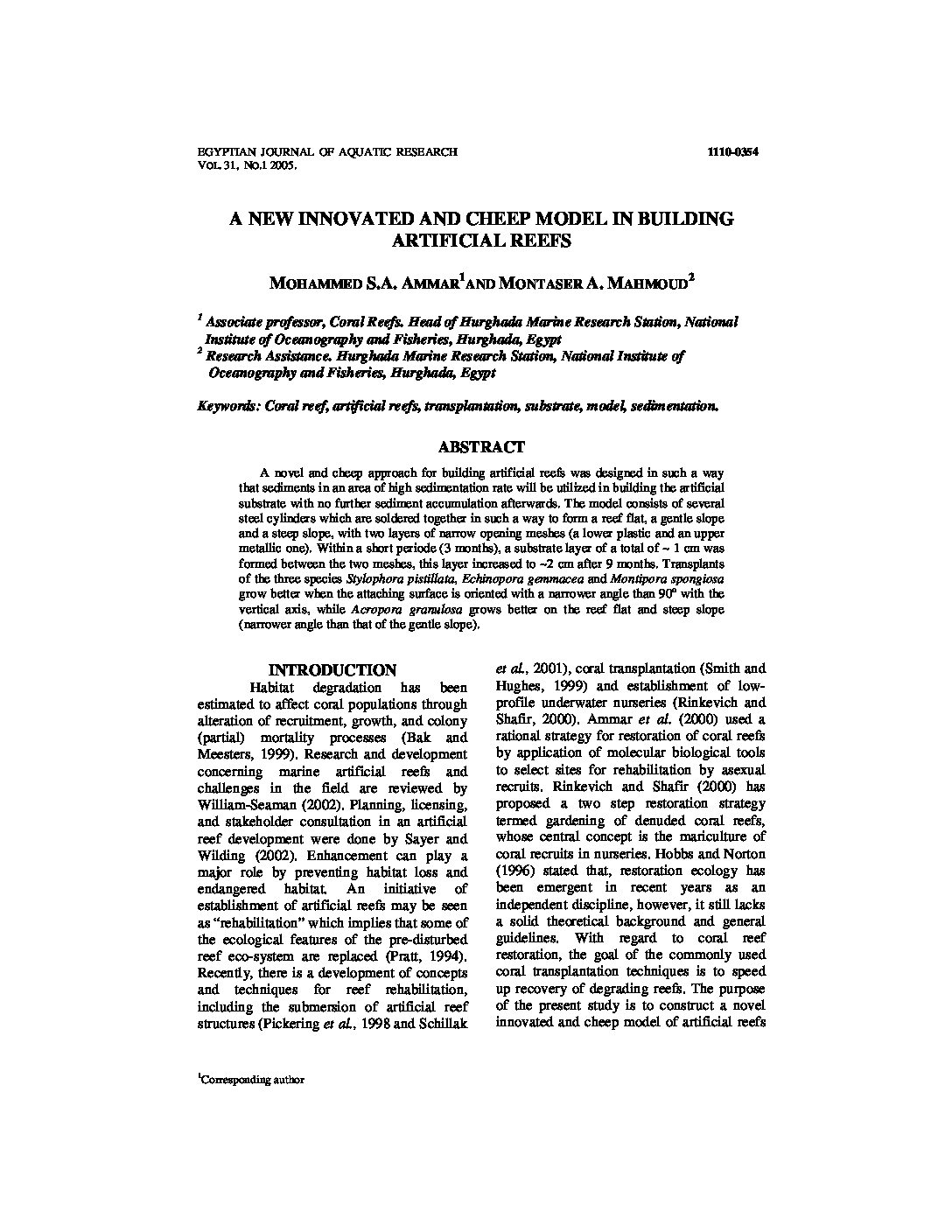Categories
vol-31EFFECT OF PHOTOPERIOD, TEMPERATURE AND HCG ON
OVARIAN RECRUDESCENCE AND ABILITY OF SPAWNING
IN NILE TILAPIA, OREOCHROMIS NILOTICUS
(TELEOSTEI, CICHLIDAE)
ABD EL-HAKIM E. EL-GAMAL and ZEINAB A. EL-GREISY*
National Institute of Oceanography and Fisheries, Aquaculture Division. Alexandria, Egypt.
Keywords: Oreochromis niloticus, Nile tilapia, Reproduction, Photoperiod, Temperature, HCG.
ABSTRACT
Adult fish of Nile tilapia, Oreochromis niloticus were netted at the quiescent phase of
their reproductive cycle (late of October) from Manzalla Lake, Egypt, in a factorial design
combining ambient or elevated temperature with normal or prolonged photoperiod.
Normal winter conditions (9L, 16°C) were applied as a control group. Another group
subjected to a higher temperature and a prolonged photoperiod was considered as a
simulation of summer (15L, 25°C). Other two different photothermal conditions were
applied as follows: (15L, 16°C) as a prolonged photoperiod condition and (9L, 25°C) as an
elevated temperature condition.
Gonadsomatic index, hepatosmatic index, ova diameter and histological studies of the
ovaries were demonstrated in each group after 60 and 90 days of experimentation. The
present study showed that significant differences were recorded in these reproductive
parameters from treatment to another. The final maturation in the ovary of O. niloticus was
accelerated by higher temperature and prolonged photoperiod. The maximum acceleration
was recorded at a combination of higher temperature and prolonged photoperiod together at
the same time. However, there was a considerable effect (acceleration) when either of these
environmental factors was increased alone, but higher in case of temperature than
photoperiod.
HCG injection increased the final ovarian maturation, egg diameter, fertilization rate,
hatching rate and percent of spawning than the non injected groups, either environmentally
controlled or not.







